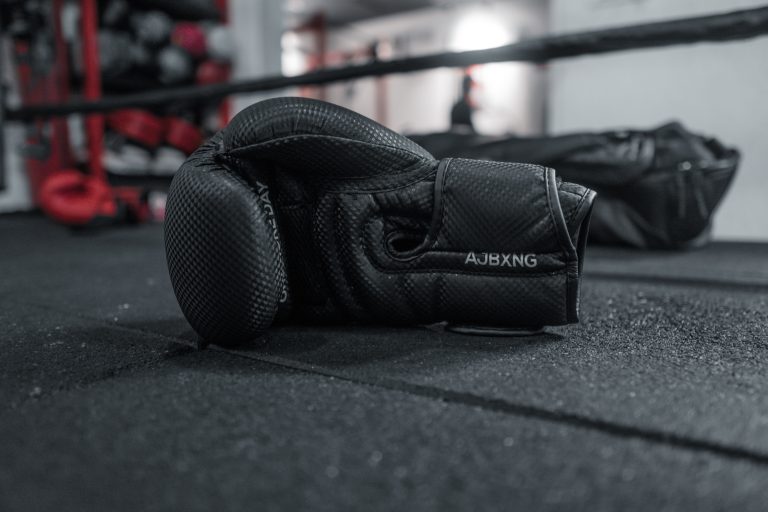What is Better Than Karate?
When it comes to martial arts, karate is undoubtedly one of the most popular styles in the world. However, despite its popularity, there are several other martial arts styles that are just as effective, if not better, than karate. In this blog post, we will explore some of the martial arts styles that are better than karate and why.
Jiu-Jitsu
Jiu-Jitsu, also known as Brazilian Jiu-Jitsu (BJJ), is a martial art that focuses on grappling and ground fighting techniques. Unlike karate which focuses on striking techniques, Jiu-Jitsu emphasizes on taking down your opponent to the ground and disabling them through various joint locks and chokes. This is what makes it one of the best martial arts styles for self-defense as it allows you to neutralize an attacker without causing serious harm.
Jiu-Jitsu has been proven to be highly effective in both street fights and competitions such as the UFC. In fact, some of the most successful UFC fighters like Royce Gracie, Demian Maia, and Georges St-Pierre have a background in Jiu-Jitsu.
Muay Thai
Muay Thai, also known as Thai boxing, is a martial art that originated from Thailand. It is a combat sport that involves the use of fists, knees, elbows, and shins. Unlike karate which only uses hand and foot strikes, Muay Thai teaches its practitioners how to use eight points of contact, making it a highly effective striking style.
Muay Thai is not just a sport; it is also used by the military and police in Thailand as a self-defense system. Its effectiveness has been demonstrated in numerous competitions such as the K-1 World Grand Prix and the Lumpinee Boxing Stadium fights.
Wrestling
Wrestling is a grappling-based martial art that involves taking your opponent down and pinning them to the ground. It is a physically demanding sport that requires a lot of strength, endurance, and agility. Unlike karate which is mostly a striking style, wrestling teaches its practitioners how to control and manipulate their opponent’s body.
Wrestling has been proven to be highly effective in self-defense situations as it allows you to take down and neutralize an attacker quickly. It is also an Olympic sport that has produced some of the world’s most dominant wrestlers such as Dan Gable and Aleksandr Karelin.
Boxing
Boxing is a combat sport that involves using only your fists to strike your opponent. It is a pure striking style that focuses on footwork, speed, and accuracy. Unlike karate which involves a lot of kicking and other strikes, boxing is all about punching.
Boxing has been proven to be highly effective in self-defense situations as well as in the ring. It is a sport that has produced some of the greatest fighters of all time like Muhammad Ali, Sugar Ray Robinson, and Mike Tyson.
What is better than Karate? Answering the Most Frequent Questions
For decades, Karate has been a popular martial art, practiced by millions of people worldwide. However, you may have heard people ask the question, „what is better than karate?“ While we can’t give you a straightforward answer, we can help you understand the most common questions people ask about alternative martial arts.
In this article, we’ll be answering some of the most frequent questions about what is better than karate.
Question 1: Is Jiu-Jitsu better than Karate?
Jiu-Jitsu and Karate are both martial arts, but they are quite different from each other. Jiu-Jitsu is a grappling martial art that focuses on ground fighting and submission holds. In contrast, Karate is a striking martial arts that focuses on hand and footwork strikes. With that said, neither one is inherently better than the other. Jiu-Jitsu may provide an advantage in grappling scenarios, but Karate may be better suited for self-defense situations where strikes are necessary.
Question 2: What about Muay Thai?
Muay Thai is a striking-based martial art that is used in competitive combat sports. While it does share similarities with Karate, its focus is on using the body’s eight limbs for strikes, including elbows and knees, along with punches and kicks. Muay Thai is often regarded as one of the most effective martial arts for self-defense and competitive fighting. It can also provide a great cardiovascular workout that improves your overall fitness level.
Question 3: How about Taekwondo?
Taekwondo is another striking martial art that utilizes strikes with the hands and feet. However, its focus is primarily on kicks, with one-third of the moves specifically designed for kicking techniques. Taekwondo also includes a lot of jumping and spinning kicks, which can make it a good choice for those who want to improve their flexibility and athleticism. Taekwondo can be a great option for self-defense, but it may be more limited in real-life situations compared to other martial arts like Jiu-Jitsu or Krav Maga.
Question 4: Is Krav Maga better than Karate?
Krav Maga is a self-defense system developed by the Israeli Defense Forces that combines elements of boxing, wrestling, Judo, and Karate. Its focus is on practical self-defense techniques for real-life situations, including how to defend against armed attackers. Krav Maga relies on a no-nonsense approach to self-defense that emphasizes attacks to the body’s most vulnerable areas. It is often regarded as one of the most effective martial arts for self-defense.
Question 5: What are the benefits of practicing other martial arts?
While Karate is an excellent martial art, there are many benefits to practicing other martial arts. Different martial arts can offer unique advantages, including specialized techniques, a new perspective on self-defense, and greater exposure to different cultures. Practicing different martial arts can also help you develop a more well-rounded approach to your fitness and health.
How to Choose a Martial Art That’s Right for You
Are you interested in learning a martial art but don’t know which one to choose? With so many options available, it can be difficult to determine which martial art is the best fit for your needs and interests. Whether you’re looking for self-defense training, a way to stay fit, or simply a new hobby, this guide will help you make an informed decision.
Step 1: Determine Your Goals
Before you can choose a martial art, it’s important to determine what you hope to achieve by training in one. Some common goals might include:
- Self-defense: If your primary motivation for learning a martial art is to become better able to defend yourself in dangerous situations, you may want to consider a style that emphasizes practical techniques and scenarios.
- Fitness: Many martial arts provide an excellent workout and can be a fun way to stay in shape. If this is your primary goal, you might want to choose a style with lots of physical activity, such as kickboxing or MMA (mixed martial arts).
- Mental discipline: Some martial arts focus heavily on the mental aspects of the discipline, teaching meditation, focus, and self-control. If this interests you, consider a style like karate or taekwondo.
- Competition: If you’re interested in competing against other martial artists, you’ll want to select a style that has a recognized competitive aspect, such as judo or Brazilian jiu-jitsu.
Step 2: Research Different Styles
Once you’ve identified your goals for studying a martial art, it’s time to research the different styles that may be a good fit for you. Some popular martial arts styles include:
- Karate: A Japanese style that emphasizes hand strikes, kicks, and blocks.
- Taekwondo: A Korean style that features high, flashy kicks and strikes, as well as grappling and joint locks.
- Judo: A Japanese style that focuses on throws and grappling techniques, typically used in competition.
- Krav Maga: An Israeli style that teaches practical self-defense techniques, including strikes, throws, and weapons training.
There are many other styles available, and each has its own unique features and benefits. When researching different styles, look for information on the history of the style, the techniques that are taught, and the goals of the practice.
Step 3: Find a Qualified Instructor
No matter what martial art you choose, it’s essential to find a qualified instructor who can guide you through the learning process. Look for an instructor who has experience teaching the style you’re interested in and who has a reputation for being knowledgeable and approachable.
Step 4: Start Training
Once you’ve selected a style and found a qualified instructor, it’s time to start training! Be prepared to work hard and be patient with yourself as you learn the techniques and philosophy of your chosen martial art. Remember that progress takes time, and don’t get discouraged if you don’t see immediate results.
Conclusion
Choosing a martial art can be a challenging decision, but by following these four steps, you’ll be well on your way to finding a style that suits your goals, interests, and personality. Remember to be patient, practice regularly, and have fun!
Inhaltsverzeichnis





